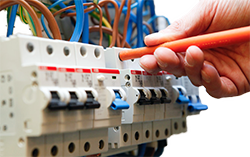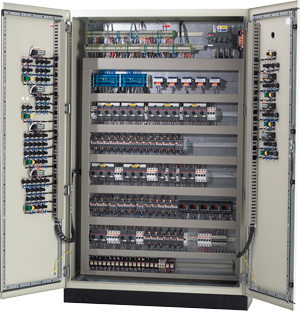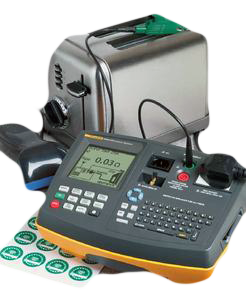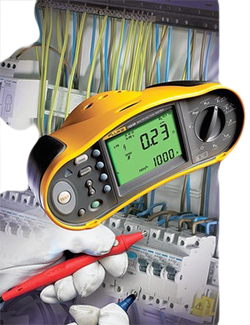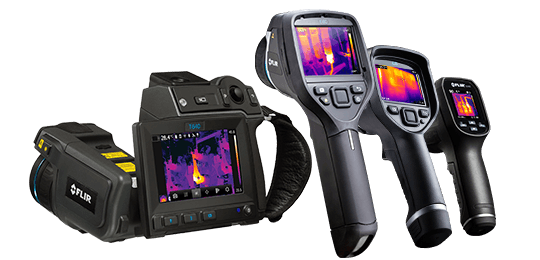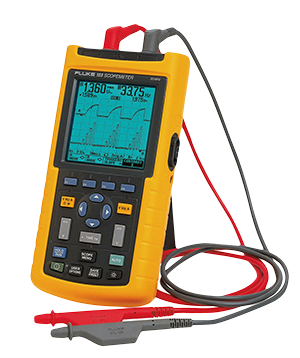- Electrical installations
- BMS Control systems
- Portable Appliances test
- Fixed wiring testing
- Thermal Imaging Services
- Power factor correction
- CCTV Surveillance Systems
An electrical installation is that supplies power safely to commercial, residential, agricultural and industrial projects. There is a direct relationship between the nature, quality and size of the installation and the cost that is paid by the customer but regardless of how much this installation will cost it must be designed and installed to meet certain requirements referred to as the British standards BS7671 (IEE wiring regulation 1th edition) Therefore the electrician has a continuing responsibility to work professionally in order for the installation to meet the requirements of the British standards BS7671 (IEE wiring regulation 1th edition).
All Electrical installation and repairs in the UK must be carried out by a qualified engineer and must be subjected to certain tests on completion and accompanied by a completion certificate indicating the nature and type of the work carried out and the results of the final electric testing in accordance with the current regulation.
All parts of the electrical installation need to be assessed, checked and function tested on one by one bases to ensure correct system operation, Our engineers are qualified and highly experienced in diagnosing these parts failures and can carry all types of service and repairs on these systems, We only makes use of original replacement parts and accessories. In fact, our warehouse is stocked with authentic and factory spare parts to ensure that we can deliver prompt service or repair whatever the make and model of your system may be.
Our engineers only use top-of-the-line test instruments and tools when providing repairs or service. This is to ensure that the job gets done in an efficient manner and that your system are guaranteed to be safe from further damage or future breakdown.
A building management system (BMS), otherwise also known as a building automation system (BAS), is a computer-based control system installed in buildings that controls and monitors the building’s mechanical and electrical equipment such as ventilation, lighting, power systems, fire systems, and security systems. A BMS consists of software and hardware; the software program, usually configured in a hierarchical manner and is written to reflect the control logic of which the control panel will be operating on, whilst the hardware part is a series of control relays, contactors, different type of sensors and electrical MCBs, and as it is an considered part of an electrical installation it must be designed and installed to meet the British standards BS7671 (IEE wiring regulation 1th edition)
All parts of the electrical installation need to be assessed, checked and function tested on one by one bases to ensure correct system operation, Our engineers are qualified and highly experienced in diagnosing these parts failures and can carry all types of service and repairs on these systems, We only makes use of original replacement parts and accessories. In fact, our warehouse is stocked with authentic and factory spare parts to ensure that we can deliver prompt service or repair whatever the make and model of your system may be.
Our engineers only use top-of-the-line test instruments and tools when providing repairs or service. This is to ensure that the job gets done in an efficient manner and that your system are guaranteed to be safe from further damage or future breakdown.
Portable appliance testing (PAT) is the term used to describe the examination of electrical appliances and equipment to ensure they are safe to use, under British safety regulation is a requirement in a workplace to have all portable appliances tested for electrical safety once every year while in an industrial or construction site the PAT test is required to be undertaken once every 3 months considering the higher risk associated with the industrial sites
Most electrical safety defects can be found by visual examination but some types of defect can only be found by testing. However, it is essential to understand that visual examination is an essential part of the process because some types of electrical safety defect can't be detected by testing alone.
A relatively brief user check (based upon simple training and perhaps assisted by the use of a brief checklist) can be a very useful part of any electrical maintenance regime. However, more formal visual inspection and testing by a competent person may also be required at appropriate intervals, depending upon the type of equipment and the environment in which it is used.
All portable appliances need to be assessed, checked and tested on one by one bases to ensure correct operation and compliance with electrical safety regulation, Our engineers are qualified and highly experienced inn carrying out such a test and can will provide you will a a full detailed report with Pass or Fail statues of each item, We only makes use of original replacement parts and accessories. In fact, our warehouse is stocked with authentic and factory spare parts to ensure that we can deliver prompt service or repair whatever the make and model of your system may be.
Our engineers only use top-of-the-line test instruments and tools when providing repairs or service. This is to ensure that the job gets done in an efficient manner and that your system are guaranteed to be safe from further damage or future breakdown.
Fixed Wiring Testing is a popular phrase used to describe an Electrical Installation Condition Report formerly called Periodic Inspection Report. The reason for carrying out condition reports of electrical installations is to determine the current condition of electrical systems in terms of design and safety.
This is to ensure compliance with current electrical wiring regulations - by identifying failures or defects and making appropriate recommendations via a periodic inspection report. .
Put simply, a Periodic Inspection Report is based on the condition of the electrical wiring, circuits, accessories and connections and is based on Inspecting and Testing the entire electrical system within your home, premises etc.
Each circuit's cable and accessories e.g. sockets, light switches, light fittings etc., will be inspected for visual damage. wear and tear etc. Then the wiring of each circuit will undergo a series of tests to make sure the wiring is safe and that the circuit is wired correctly.
The Periodic Inspection Report will also determine if items such as earth bonding and incoming supply is sufficient. All this data will be contained in the Periodic Inspection Report we forward to clients .
If there are any faults found during the test they are given codes C1,C2, or C3, if a C1, or C2 code is given it would mean the installation is in an unsatisfactory condition. Code C1 faults require urgent attention - danger present, code C2 faults require attention - potential danger, code C3 faults are an improvement recommended. .
Electricity within your premises will be limited while the testing is carried out and at some point we will require to switch off the electricity to your distribution board so we can inspect and test those units and also test your main incoming earth.
Legislation requires fixed wiring testing be carried out every one to five years in most work places. In compliance with the Electricity at Work Regulations of 1989, all work activities and rented accommodation must take precautions to avoid the risk of death or personal injury. Electrical Wiring Regulations also suggest time intervals for various electrical installations.
It is important to appreciate that the regular inspection and testing of all electrical installations is a requirement of the Electricity at Work Regulations. The time interval concerned will, of course, depend on the type of installation and on the way in which it is used. The table below shows the BS7671 recommended intervals between periodic tests and inspections.
BS7671 Electrical Regulations - Recommended intervals between periodic tests and inspections Type of installation - Maximum period between inspections and testing
- Domestic premises (general) = 10 years/Change of Occupancy
- Domestic premises (rented houses and flats) = 5 years/Change of Occupancy
- Residential accommodation (HMO, halls of residence, nurses accommodation etc) = 5 years/Change of Occupancy (some local authorities ask for HMO properties to be tested every 3 years)
- Commercial premises = 5 years/Change of Occupancy
- Educational establishments = 5 years
- Industrial premises = 3 years
- Offices = 5 years
- Shops = 5 years
- Laboratories = 5 years
- Hospitals and medical clinics (general areas) = 5 years
- Hospitals and medical clinics (medical locations) = 1 year
- Cinemas = 1-3 years (local authorities license should stipulate frequency)
- Churches = 5 years
- Leisure complexes (excluding swimming pools) = 3 years
- Places of public entertainment = 3 years
- Restaurants and hotels = 5 years
- Theatres, etc. = 3 years
- Public Houses = 5 years
- Village halls/community centres = 5 years
- Agricultural and horticultural = 3 years
- Caravans = 3 years but should be reduced to every 1 year if used frequently.
- Caravan parks = 1 year
- Highway power supplies = 6-8 years
- Marinas = 1 year
- Fish farms = 1 year
- Swimming pools = 1 year
- Emergency lighting = 3 years - although luminaries should be discharge tested every 1 year
- Fire alarms = 1 year
- Launderettes = 1 year
- Petrol filling stations = 1 year
- Construction site installations = 3 months
- Temporary installation = 3 months
All parts of the electrical installation need to be assessed, checked and function tested on one by one bases to ensure correct system operation, Our engineers are qualified and highly experienced in diagnosing these parts failures and can carry all types of service and repairs on these systems, We only makes use of original replacement parts and accessories. In fact, our warehouse is stocked with authentic and factory spare parts to ensure that we can deliver prompt service or repair whatever the make and model of your system may be
Our engineers only use top-of-the-line test instruments and tools when providing repairs or service. This is to ensure that the job gets done in an efficient manner and that your system are guaranteed to be safe from further damage or future breakdown.
Abnormal heating associated with high resistance or excessive current flow is the main cause of many problems in electrical systems. Infrared thermography allows us to see these invisible thermal signatures of impending damage before the damage occurs. When current flows through an electric circuit, part of the electrical energy is converted into heat energy. This is normal. But, if there is an abnormally high resistance in the circuit or abnormally high current flow, abnormally high heat is generated which is wasteful, potentially damaging and not normal.
Ohm's law (P=I2R) describes the relationship between current, electrical resistance, and the power or heat energy generated. We use high electrical resistance for positive results like heat in a toaster or light in a light bulb. However sometimes unwanted heat is generated that result in costly damage. Under-sized conductors, loose connections or excessive current flow may cause abnormally high unwanted heating that result in dangerously hot electrical circuits. Components can literally become hot enough to melt.
Thermal imagers enable us to see the heat signatures associated with high electrical resistance long before the circuit becomes hot enough to cause an outage or explosion. Be aware of two basic thermal patterns associated with electrical failure:
- 1) a high resistance caused by poor surface contact and
- 2) an over loaded circuit or multi-phase imbalance problem.
Our enginrrtd are experianced in electrical installation Thermal Imaging, if defects are found thenn all parts of the electrical installation need to be assessed, checked and function tested on one by one bases to ensure correct system operation, Our engineers are qualified and highly experienced in diagnosing these failures and can carry all types of electrical repairs, We only makes use of original replacement parts and accessories. In fact, our warehouse is stocked with authentic and factory spare parts to ensure that we can deliver prompt service or repair whatever the make and model of your system may be.
Our engineers only use top-of-the-line test instruments and tools when providing repairs or service. This is to ensure that the job gets done in an efficient manner and that your system are guaranteed to be safe from further damage or future breakdown.
POWER FACTOR is the ratio between the useful (true) power (kW) to the total (apparent) power (kVA) consumed by an item of A.C. electrical equipment or a complete electrical installation. It is a measure of how efficiently electrical power is converted into useful work output. The ideal power factor is unity, or one. Anything less than one means that extra power is required to achieve the actual task at hand. All current flow causes losses both in the supply and distribution system. A load with a power factor of 1.0 results in the most efficient loading of the supply. A load with a power factor of, say, 0.8, results in much higher losses in the supply system and a higher bill for the consumer. A omparatively small improvement in power factor can bring about a significant reduction in losses since losses are proportional to the square of the current. .
When the power factor is less than one the ‘missing’ power is known as reactive power which unfortunately is necessary to provide a magnetising field required by motors and other inductive loads to perform their desired functions. Reactive power can also be interpreted as wattless, magnetising or wasted power and it represents an extra burden on the electricity supply system and on the consumer’s bill. A poor power factor is usually the result of a significant phase difference between the voltage and current at the load terminals, or it can be due to a high harmonic content or a distorted current waveform. A poor power factor is generally the result of an inductive load such as an induction motor, a power transformer, a ballast in a luminaire, a welding set or an induction furnace. A distorted current waveform can be the result of a rectifier, an inverter, a variable speed drive, a switched mode power supply, discharge lighting or other electronic loads. .
A poor power factor due to inductive loads can be improved by the addition of power factor correction equipment, but a poor power factor due to a distorted current waveform requires a change in equipment design or the addition of harmonic filters. Some inverters are quoted as having a power factor of better than 0.95 when, in reality, the true power factor is between 0.5 and 0.75. The figure of 0.95 is based on the cosine of the angle between the voltage and current but does not take into account that the current waveform is discontinuous and therefore contributes to increased losses. .
An inductive load requires a magnetic field to operate and in creating such a magnetic field causes the current to be out of phase with the voltage (the current lags the voltage). Power factor correction is the process of compensating for the lagging current by creating a leading current by connecting capacitors to the supply. A sufficient capacitance is connected so that the power factor is adjusted to be as close to unity as possible.
Away from the complex electrical definitions and in a really simple term consider the unit paid for on your electric bill as a pint of beer the site POWER FACTR is the ratio of how much beer to foam fills each pint, If your power factor is say 0.7 it means only 70% of the pint is filled with drinkable beer and the 30% is filled with foam and bubbles which in real term meaning you end up consuming and paying for more pints, So in a simple term correcting your power factor to a 0.99 or a unit of 1 means your sites pays 30% less electricity bill whilst running the same machinery.
Our engineers are qualified and highly experienced in measuring and calculating the power factor at your site and can carry all types of power factor correction units installation and repairs and repairs on these type of systems, We only makes use of original replacement parts and accessories. In fact, our warehouse is stocked with authentic and factory spare parts to ensure that we can deliver prompt service or repair whatever the make and model of your system may be.
Our engineers only use top-of-the-line test instruments and tools when providing repairs or service. This is to ensure that the job gets done in an efficient manner and that your system are guaranteed to be safe from further damage or future breakdown.
CCTV (closed-circuit television) is a TV system in which signals are not publicly distributed but are monitored, primarily for surveillance and security purposes. CCTV relies on strategic placement of cameras, and observation of the camera's input on monitors somewhere. CCTV (closed-circuit television) is a TV system in which signals are not publicly distributed but are monitored, primarily for surveillance and security purposes. .
CCTV relies on strategic placement of cameras, and observation of the camera's input on monitors somewhere. Because the cameras communicate with monitors and/or video recorders across private coaxial cable runs or wireless communication links, they gain the designation "closed-circuit" to indicate that access to their content is limited by design only to those able to see it. .
Older CCTV systems used small, low-resolution black and white monitors with no interactive capabilities. Modern CCTV displays can be color, high-resolution displays and can include the ability to zoom in on an image or track something (or someone) among their features. Talk CCTV allows an overseer to speak to people within range of the camera's associated speakers. .
CCTV is commonly used for a variety of purposes, including:
- Maintaining perimeter security in medium- to high-secure areas and installations.
- Observing behaviour of incarcerated inmates and potentially dangerous patients in medical facilities.
- Traffic monitoring.
- Overseeing locations that would be hazardous to a human, for example, highly radioactive or toxic industrial environments.
- Building and grounds security.
- Obtaining a visual record of activities in situations where it is necessary to maintain proper security or access controls (for example, in a diamond cutting or sorting operation; in banks, casinos, or airports).
CCTV is finding increasing use in commercial and private building, We can supply and install all types of CCRV systems and our engineers are well experienced with maintaining such a system, wither a small standalone system or a large network connected web accessed remotely controlled system we will be able to help
Our engineers only use top-of-the-line test instruments and tools when providing repairs or service. This is to ensure that the job gets done in an efficient manner and that your system are guaranteed to be safe from further damage or future breakdown.
